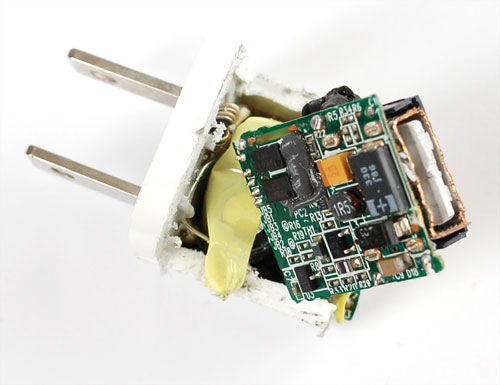Reverse Engineering Apple’s iPhone/iPod Charger System Secrets
Third party manufacturers that want to make iPhone/iPod charging devices have to agree to a secret hardware setup that will allow the devices to work, and promise to not disclose what components and specifications are needed to make a charger work. Engineer/hacker/braniac Ladyada (of adafruit.com fame) disassembles a few charging devices to investigate the exact resistors used, and how a wall charging device (AC) differs from a battery charging device.
Read more of her notes and explanations about USB charging, the differences in iPhone chargers over the last few generations, and a great photo of the innards of an iPhone wall jack.
Adafruit sells a variety of electronics kids: Arduino supplies, breakout boards, power supplies and more.
If you want to build your own battery-powered Apple charger, get the adafruit MintyBoost kit here.
Two other fun and hilarious electronics kits from them: Tweet-a-Watt and the Digg Button Kit.
One part of the video of particular interest is the soldering blower unit that Ladyada uses. Designed to allow for the teeny-tiny components to be soldered or removed safely instead of being bashed with a blazing hot metal iron tip, this thing melts the solder with hot air, so you can then safely manipulate it as needed. She uses the Hakko 851 hot air soldering station – it’s not cheap, but I think I need to get one of those things.

The 851 hot air rework station is ideal for soldering and desoldering small surface mount chip components, heating heat-shrink tubing, and other local heating operations.
• adjustable temperature control from 100°C to 540°C (212°F to 1004°F)
• ultra-light setting for air volume control
• ESD safe by design

